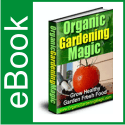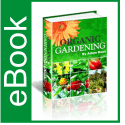The Basics of Planting a Vegetable Garden
The Basics of Planting a Vegetable Garden
Article by Sarah Duke
Vegetable gardening is a wonderful way to feed your family safe and healthy food at a fraction of the cost. Most Americans spend just 2-5 hours per week cultivating their gardens and, in the end, they wind up saving 500 dollars in food! With just 70 dollars, you can begin home vegetable gardening, growing tomatoes, cucumbers, beans, squash, peppers and more! Here is everything you need to know to get started — from picking a spot, to making raised beds, to cultivating the ground and choosing your planting patterns.
The first thing you’ll need to do when starting a vegetable garden is picking the right size and location. To begin with, be sure your location. The majority of vegetables require approximately six to eight hours of direct sunlight on a daily basis for the best outcome. If you have a less well lit area, you can plant your spinach and lettuce there. As you evaluate your yard, make sure to take into account the shadows cast by the deciduous trees and the house during specific times of the day.
In a perfect world, the garden will be conveniently situated in close proximity to the kitchen, so you can tend to it more easily and pick your crop without hiking a long way. The ideal soil will be full of nutrients and drain properly, so you might need to add organic compost and get out your tools to ventilate the soil before you start.
A gardening expert will usually tell you that raised beds are the best method for effective vegetable gardening. Garden guides love raised beds because they increase the growing area by reducing the amount of garden used for paths, they save fertilizer and compost materials, they are easy and convenient to work with, they work well with trellises, they are 12-15 degrees warmer than the ground so you can plant earlier, and they are beautiful to look at. To begin creating your raised beds, measure and stake down each garden bed and outline the beds with string. To raise the bed, loosen the soil with a shovel or fork and nestle your bed into the plot. Smooth the soil on the surface of the bed with the tines and back edge of a rake. Take your time when shaping the beds, for this step is very important. Each bed should rise eight inches above ground when all is said and done and the most productive raised beds are about three feet wide. You can line the beds with bricks, stones or wood, whichever you prefer.
There are several strategies when it comes to choosing which plants to use in your vegetable gardening endeavor. Some vegetables are grown from seeds in a method known as “direct-sow.” A few weeks before the last frost (check the Farmer’s Almanac to get this date), sow your beets, carrots, parsnips, peas, radishes, chard, turnips and salad greens. After the last frost, sow your beans, corn, squash and herbs like dill and cilantro. Next, you may want to use some transplants for broccoli, Brussels sprouts, cabbage, cauliflower, eggplant, parsley, peppers and tomatoes. Your summer squash, lettuce and broccoli will grow equally well from seeds or transplants, so that choice is up to you. Growing plants like beets, chard, green beans, lettuce, parsley, peppers, tomatoes, radishes and summer squash is rather easy in most parts of the country, so you may want to include a lot of these crops to start.
About the Author
Eating healthfully doesn’t have to be expensive when you plant a vegetable garden. From container vegetable gardening to edible landscaping, you’ll find the information you need at the Vegetable Gardening Site.
Use and distribution of this article is subject to our Publisher Guidelines
whereby the original author’s information and copyright must be included.

 September 10, 2012
September 10, 2012 







